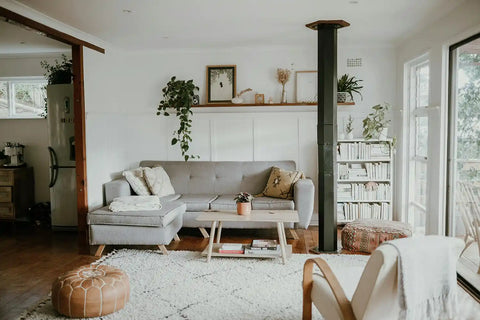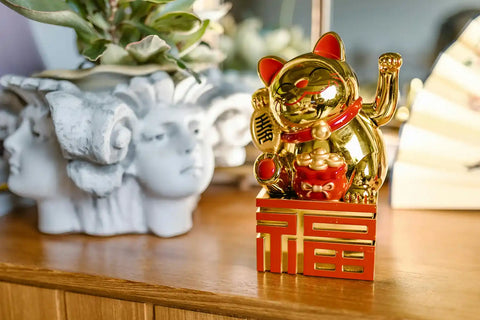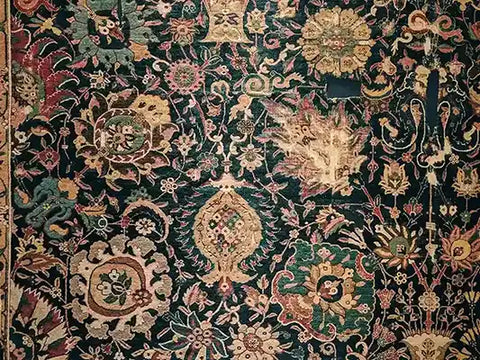Cultural Influences in Home Decor: Exploring Global Design Trends by Amy Baker

Home decor is more than just a way to make our living spaces look attractive; it reflects who we are and where we come from. Around the world, different cultures have their unique styles, materials, and designs that contribute to a diverse range of home decorating trends. We will take a closer look at how cultural influences in home decor shape our interiors and explore some of the most exciting global design trends.
 Photo - Karolina Grabowska
Photo - Karolina Grabowska
The Influence of History and Tradition
Every culture has a rich history that profoundly impacts its design aesthetics. Take a look at some of them.
Classical European
Classical European designs often feature decorative details and luxurious materials, reflecting the region's historical opulence and artistic heritage. These designs frequently include elaborate carvings, gilded accents, and intricate tapestries similar to the grandeur of ancient empires and Renaissance artistry.
Scandinavian
Scandinavian design, known for its simplicity and functionality, is deeply rooted in the Nordic tradition of living in harmony with nature. This design style emphasizes clean lines, natural light, and minimalist aesthetics, reflecting the serene and uncluttered landscapes of the north.
 Photo - Taryn Elliott
Photo - Taryn Elliott
Asian
In many Asian countries, home decor is heavily influenced by philosophical and religious beliefs. The principles of Feng Shui in Chinese culture or the Zen philosophy in Japanese design emphasize balance, harmony, and the flow of energy, which are evident in the way homes are decorated and organized. With its rich colors, intricate patterns, and diverse textures, Indian design reflects a deep connection to spirituality and tradition.
Feng Shui focuses on the arrangement of spaces to optimize energy flow, using elements like water and plants. At the same time, Zen interiors are characterized by their simplicity, natural materials, and open spaces, creating a sense of tranquility and mindfulness.
Indian interiors often showcase an abundance of ornate decorations, handcrafted furniture, and vibrant textiles, drawing inspiration from the country's long history and cultural diversity.
Contemporary Cultural Fusion
One of the most exciting trends in home decor today is the fusion of different cultural styles. This contemporary approach to design allows for a unique blend of elements from various cultures, creating a global aesthetic.
For example, you might see a living room with a Moroccan rug, a Japanese low table, and Scandinavian chairs. This blend creates a visually appealing space and tells a story of cultural harmony and appreciation. It’s a testament to the growing interconnection of our world, where a homeowner in New York or London or Delhi can effortlessly embody the essence of Moroccan warmth, Japanese minimalism, and Nordic functionality all in one space.
 Photo - Rdne Stock
Photo - Rdne Stock
This fusion of cultural influences in home decor extends beyond mere aesthetics. It represents a deeper understanding and respect for different cultures. Mixing and matching elements from various cultures enables homeowners to create spaces that are stylish, contemporary, culturally inclusive, and globally conscious.
Material and Color: A Cultural Palette
Materials and colors used in home decor can also signify cultural influences. For instance:
- In Mediterranean regions, terracotta, tiles, and bright, sun-kissed colors are predominant, reflecting the climate and coastal landscapes. The use of natural light, open spaces, and vibrant blues and yellows captures the essence of the sun and sea that is so characteristic of this region.
- African decor often features earthy tones and natural materials like wood, stone, and animal hides, representing the continent's vast wilderness and tribal heritage. These materials are chosen for their aesthetic appeal, their practicality, and the way they connect the indoors to the natural world outside.
Here’s how colors play a significant role in cultural expression:
- Vibrant colors are often associated with Latin American and Caribbean cultures, reflecting the lively and spirited nature of their festivals and traditions. These regions embrace bold, bright colors that signify energy, passion, and a zest for life.
- Nordic design typically involves a muted color palette, with whites, grays, and pastels, creating a calm and serene atmosphere. This color scheme reflects the Nordic landscape and climate, emphasizing light and space in countries where winter days can be short and dark.
Cultural Motifs and Patterns
Patterns and motifs are another way to embrace cultural influences in home decor. From the intricate geometric patterns of Islamic art to the bold, symbolic motifs found in African textiles, these designs add visual interest to a space and carry cultural significance and history.
Islamic patterns, often seen in tiles, carpets, and architecture, are a reflection of an art form that has evolved over centuries, embodying mathematical precision and spiritual depth. On the other hand, African motifs are deeply symbolic, often telling stories.
 Photo - Celep
Photo - Celep
How to Incorporate Motifs
Incorporating these motifs into home decor can be as simple as choosing cushion covers with traditional patterns or as elaborate as installing a piece of art or tapestry that reflects a particular cultural heritage. These decorative elements serve as more than just aesthetic enhancements; they are a way to connect with and honor the diverse cultures that they represent.
Sustainability and Eco-Friendly Practices
A growing trend in home decor is the focus on sustainability and eco-friendly practices, which is deeply rooted in many indigenous cultures around the world. This approach involves using renewable materials, supporting local artisans and craftspeople, and embracing traditional techniques with a lower environmental impact. Not only does this trend promote a more sustainable lifestyle, but it also helps in preserving cultural crafts and practices.
Technology and Modern Home Decor
Smart homes, minimalist designs, and modern materials are becoming increasingly popular, reflecting our society's focus on innovation and efficiency. However, even in these modern designs, cultural influences can be seen in the choice of color, patterns, and textures that add warmth and character to these high-tech spaces.
Global Relocation: Bringing Cultures into Your Home
An exciting aspect of incorporating global design trends into your home decor is the possibility of acquiring authentic pieces directly from their source. For those who have the opportunity to travel or relocate internationally, bringing back decor items can add an authentic touch to your cultural theme. For such global relocations, you must rely on experienced moving services, like Centennial Moving or DHL, that understand the nuances of international logistics.
If you go for their services, it is reassuring to know companies like Centennial Moving, has been assisting individuals and families in their local, long-distance, and global moving endeavors for nearly two decades. Their expertise in handling international moves makes them a reliable partner in safely transporting your precious decor items, be they delicate Moroccan lamps or bulky Scandinavian furniture, from one corner of the world to your home. Picking these professionals would guarantee your global decor pieces arrive intact, allowing you to create a culturally rich and diverse living space.














Leave a Comment